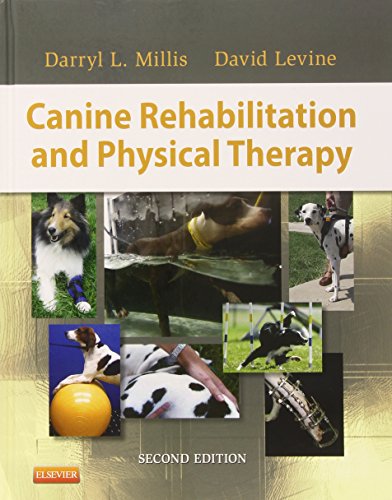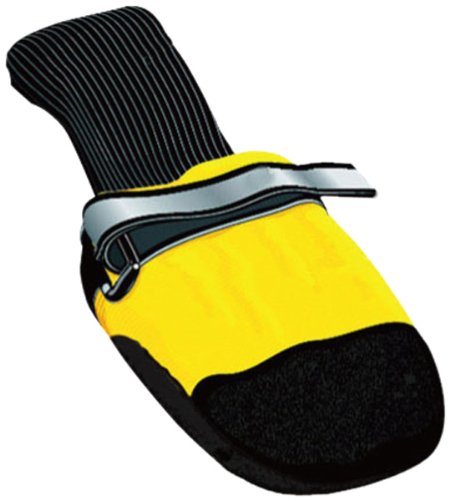
Mange is a word that when thrown around casually, can cause panic amongst dog owners. There are 4 different types of mange that effect dogs and each have varied causes and symptoms. In this article we will explain each of the varieties and discuss how mange is diagnosed and treated.
Demodectic Mange is also known as 揜ed Mange? This condition is caused by an overgrowth of Demodex canis mites within the hair follicles of the dog抯 coat. A very important point: These mites live on ALL dogs! They are passed from mother to pups within the first week of life. The trouble only occurs when the population of mites grows out of control. It is commonly believed that this condition is hereditary. Most dogs have a natural resistance that keeps the number of mites down ?dogs lacking this trait can pass it on to their offspring.
Demodex can present itself in a localized (in 1 or 2 spots) or a generalized (all over the body) form. The localized form is usually seen in young dogs, while the generalized form is a more severe condition and usually hints of a more serious immune disorder. Older dogs that develop generalized Demodex should receive diagnostic workups for other underlying ailment such as cancer, thyroid issues or Cushing抯 disease.
Demodex is not contagious t dogs or to humans, however because it is believed to be a hereditary disorder, dogs with this disease should not be bred.
Sarcoptic Mange:
Sarcoptic Mange is the type of mange that makes pet owners cringe! It抯 also known as Canine Scabies and is caused by an infection of the Scaroptes scabiei canis mite. The mites burrow into the skin of the animal and lay their eggs. The scabies have a lifecycle of 17-21 days. This form of mange is highly contagious and can be passed between dogs and humans.
Cheyletiellosis:
Cheyletiellosis is also known as 揥alking Dandruff? The Cheyletiella yasguri mite can actually be seen with the human eye, moving around the coat of the dog ?creepy. These mites have a lifecycle of 21 days and are very contagious. They can be passed between animals as well as humans. This type of mange is usually found in shelters, boarding kennels and anywhere with a dense animal population. Puppies who come from 搈ill?situations are often found to have this type of infestation.
Ear Mites:
Ear Mites are considered a type of mange as they affect the external part of the ear. This condition is caused by an infection of the Otodectes cynotis mite. These mites are contagious and can be passed on to other animals, but not to humans.
Demodectic Mange:
Localized Demodex appears as red, hairless patches (often found on the head). The spots can have a raised look to them and almost have the appearance of pimples. The patches may be accompanied by itching or they may not bother your dog at all.
Generalized cases of Demodex are often accompanied with large amounts of hair loss, deeply irritated skin, bacterial infections, fever, and swollen footpads. Itching can be intense.
Sarcoptic Mange:
Sudden severe itching is usually the first sign of Sarcoptic mange, followed by the appearance of small, firm bumps that soon become crusted due to irritation from scratching. The sores can spread throughout the body and cause secondary infections. If left untreated a severe case of Sarcoptic mange can even prove to be fatal.
Cheyletiellosis:
Besides the obvious signs of 搘alking dandruff?(seeing the mites moving on the fur), flakey scaling of the coat accompanied by itching are the most common signs of Cheleyiellosis.
Ear Mites:
Symptoms of Ear Mites include a dog showing sensitivity when one or both ears are touched, tilting the head to one side, frequent shaking of the head and increased scratching of the ear or ears. You may also notice an unpleasant odor coming from the ears. A dark discharge may be seen inside the ear.
Diagnosis of all of the types of mange will start with a thorough physical examination by your Veterinarian. Skin scrapings will be collected to be examined under a microscope. During this diagnostic test the surface of the skin is scraped with a scalpel blade. The goal is to check for mites that live in the hair follicles, thus there will be a small, irritated spot where the scrapings were taken. Your vet will probably want to scrape in multiple locations. The scrapings will then be examined under a microscope for live mites.
Other diagnostic methods include blood work and stool samples.
Demodectic Mange:
Demodex is treated in a variety of ways, most of them topical. Goodwinol ointment or benzoyl peroxide are often prescribed to be applied daily to the affected areas. For generalized cases, Amitraz dips are often an option. The safety of this prescription dip has come into question, so be sure to discuss it with your vet if this is recommended. Other drugs that have been shown to be effective against Demodex are ivermectin (the active ingredient in Heartgard) and Milbemycin oxime (the ingredient in Interceptor). If your dog has a secondary infection, antibiotics may be prescribed as well.
Mild localized cases of Demodectic mange may resolve on their own without treatment. Your vet will discuss what the best options are for your individual pet.
Sarcoptic Mange:
When treating Scarcoptic mange, the measures taken must include all pets that have come into contact with the infected animal. Often the fur is clipped down so that the scabs and irritations can be removed through bathing with a medicated shampoo (antiseborrheic). Next a dip is applied to kill the mites (Amitraz or Lime-Sulfur). This process is usually repeated 3-4 times, biweekly to stop the lifecycle of the mites. Antibiotics will be prescribed to treat any secondary infections. The bedding of the pets should also be washed and treated with an insecticide. These mites do not survive long off of their host. Keep your home clean while treating your dog. While these mites can infect humans, they can抰 reproduce on human skin.
Cheyletiellosis:
Treatment for Cheyletiellosis usually consists of topical treatments such as Lime-Sulfur or Amitraz dips, repeated over a course of 6-8 weeks. Another effective treatment is Ivermectin, given orally or as an injection. Common flea preventatives such as Selamectin (Revolution) and Imidacloprid (Advantage) have been shown to be safe methods for dealing with Cheyletiellosis. All pets within the household must be treated, as the mites are highly contagious.
Pet bedding should be washed and treated with insecticide to prevent re-infestation. Flea bombs and premise sprays can be used to rid homes of these pests.
Ear Mites:
Cleaning out the discharge is the first step when treating Ear mites. The discharge creates a barrier and prevents medication from actually being effective. Your vet will show you how to do this safely at home. They will prescribe medication (the most common being Tresaderm) to place in your dog抯 ears.
 Is it a Dog or a Bear?
For large dog breed lovers t
Is it a Dog or a Bear?
For large dog breed lovers t
 Choosing the best dog toys for your dog or puppy
Choosing the Best Dog Toys - Plus Our Favorites!
Choosing t
Choosing the best dog toys for your dog or puppy
Choosing the Best Dog Toys - Plus Our Favorites!
Choosing t
 TPLO? TTA? Tightrope? Fishline? What Does My Dog Need?
Cranial cruciate ligament (C
TPLO? TTA? Tightrope? Fishline? What Does My Dog Need?
Cranial cruciate ligament (C
 Dog clothing is essential
Dog clothing is essential
Dog clothing is essential
Dog clothing is essential
 Designer Doggy Wear
Pampered PoochesWeve all seen them right? Little doggie
Designer Doggy Wear
Pampered PoochesWeve all seen them right? Little doggie
Copyright © 2005-2016 Pet Information All Rights Reserved
Contact us: www162date@outlook.com